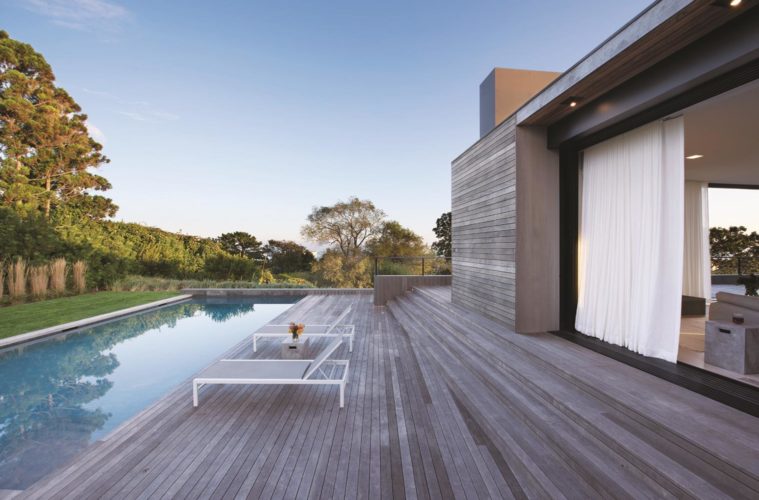Its architect knew the lay of its land well. Modernist Paul Masi grew up nearby, and has been practicing in the Hamptons since the mid-1960s. Here, he tucked his clients’ home into five landscaped levels that rapidly descend the 35-degree slope, dropping 22 feet from dune to ocean along the way.
Inverting the expected architectural sequence, Masi surprised his clients by placing the home’s swimming pool on top. “On the pool side, it feels like you’re by a little one-story bungalow embedded in the side of a hill,” he says. “The master bedroom is on top, and as you move down, it’s more private.”
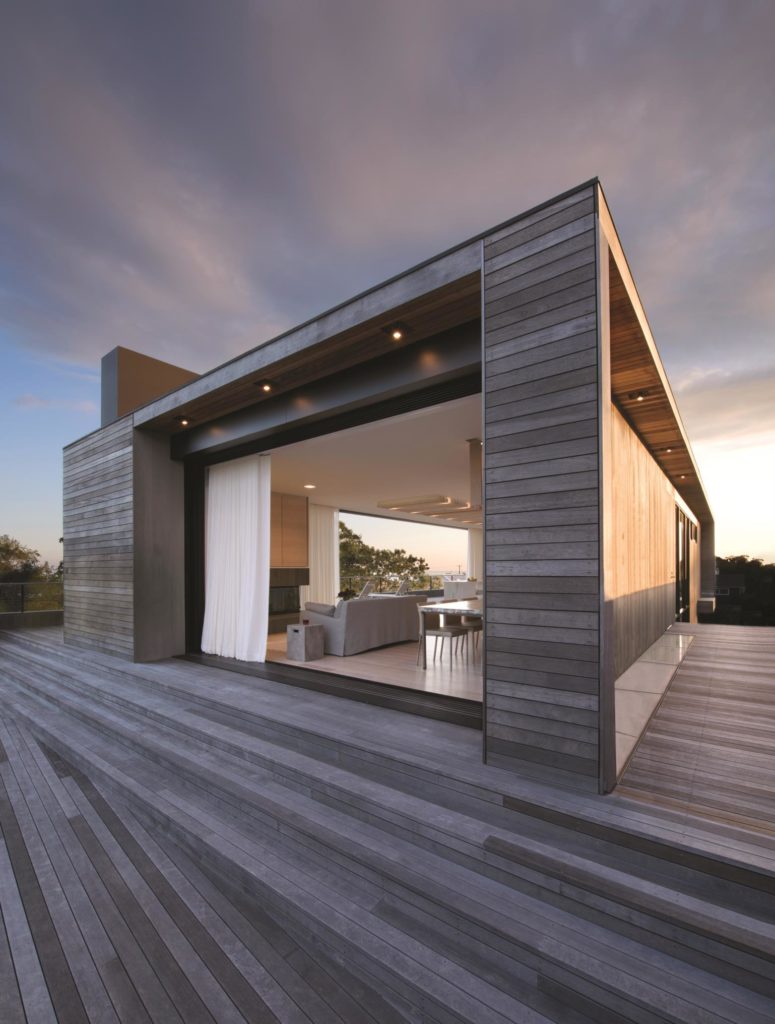

The new structure replaces a smaller home built in the 1960s. “The first time I saw it, that little house was buried in the trees and you couldn’t see what Paul’s plans were,” says builder Keith Romeo. “Once we took it down, you could see what he was thinking.”
Masi was concerned with how to nestle the house into the site so that it appears to be part of it. “He has the ability to see what each lot gives him,” Romeo says. “I’ve done several projects with him, and we don’t usually do much trucking of fill to make the site fit the house. He fits the project to the existing grade.”
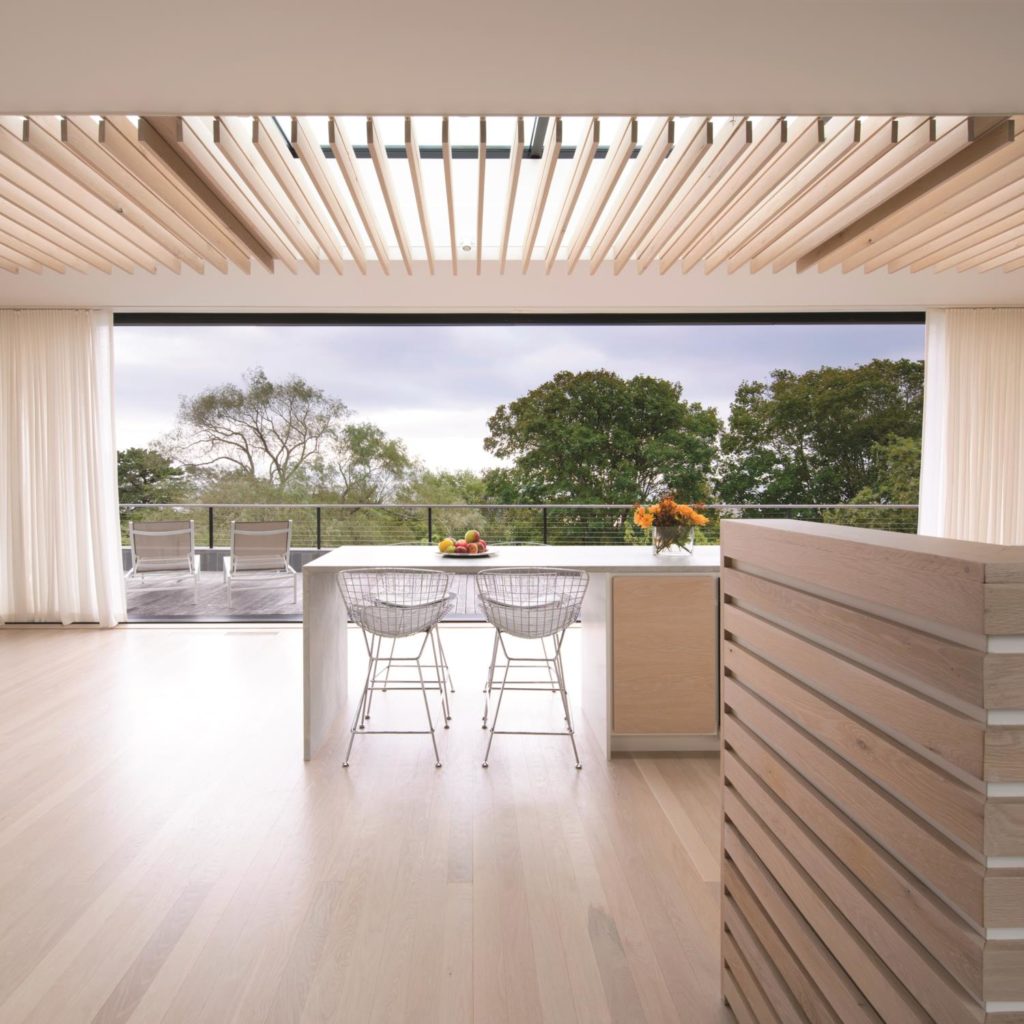

Masi and the architects in his office spent a great deal of time on model-making: working through topographical studies of the site, placing the home within it, and engaging all of its landscape. Then they decided on a series of retaining walls that step down the hillside, preserve the land, and anchor the new home. “We must have built 35 to 40 models with topography as part of them all, and the home embedded within the landscape,” he says. “It was a real puzzle.”
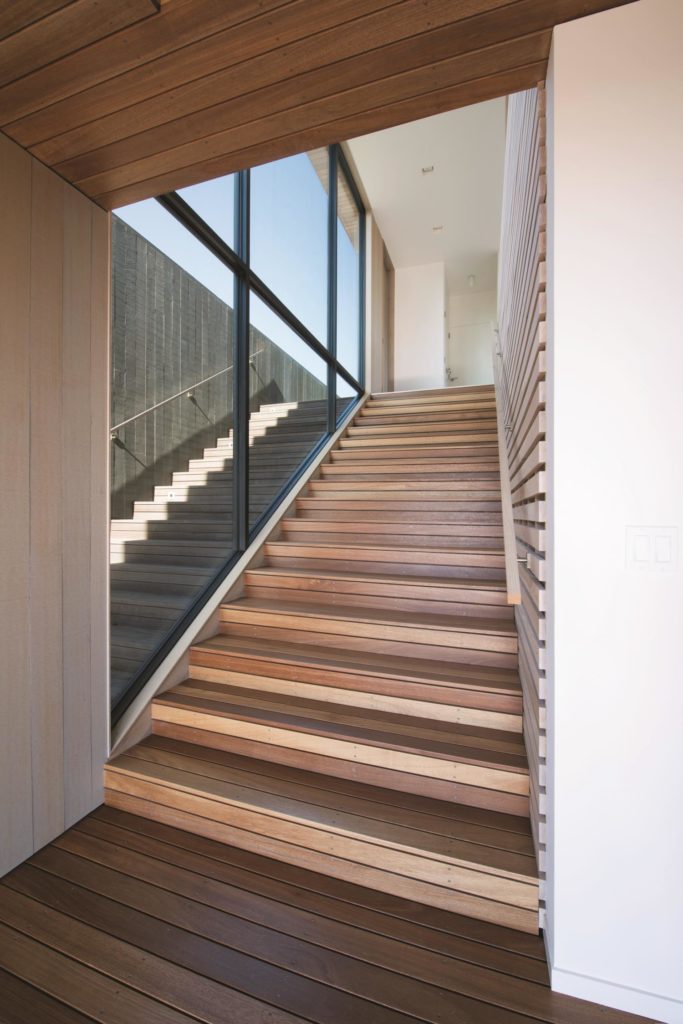

That meant a thoughtful process of editing down each complex layer. “A lot of the budget was taken up by infrastructure, and that led to clarity about architecture and what we were doing,” he continues. “The retaining walls are roughly parallel and create outdoor spaces.”
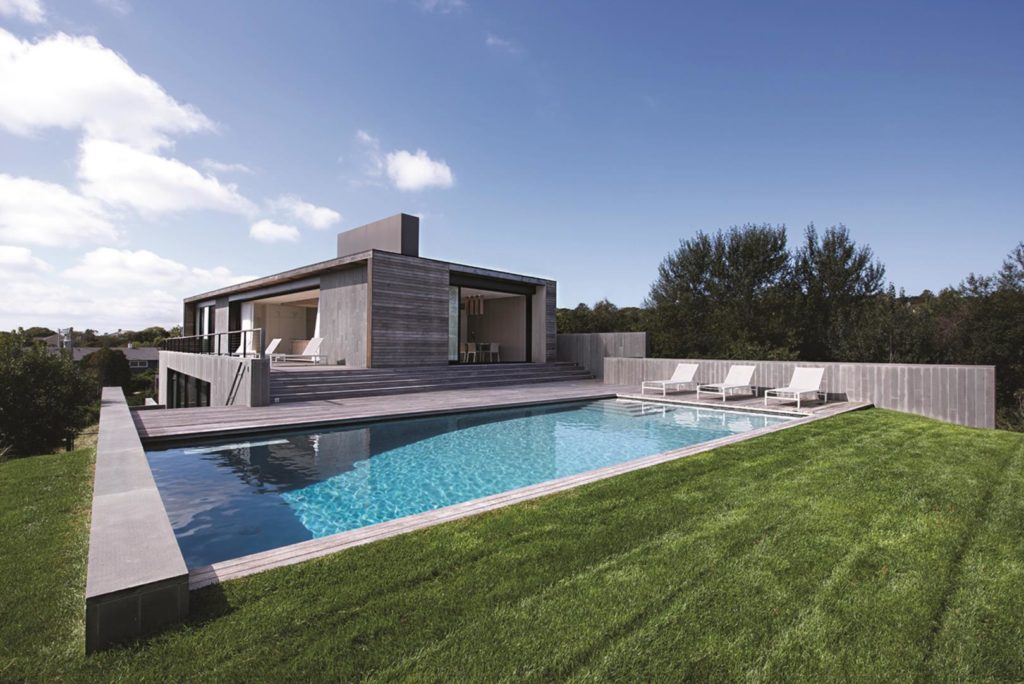

First and foremost came the challenge of a septic system, which had to be sunk 80 feet below grade because of high clay content in the soil. “We dug it with a clamshell to get to sand, which is kind of unusual,” Romeo says. “We excavated the foundation wall and put floor joists in, then built the house.”
Architect and builder inserted their retaining walls, aiming to compensate for the clay permeating the soil, from back to front, and snugged the house tight to its site.
“When you look at the big picture, the client experience comes from the overall planning—and then the details. It’s not like each room had all the amenities; it was more about capturing the views and the great outdoors.”
Masi says
Masi collaborated closely with landscape architect Kim Hren, owner of local firm Groundworks. “Kim lives here and knows what can live on the beach and what can’t. She understands the marine environment,” he says.
Hren worked to keep the plantings as simple and clean as Masi’s design, achieved via poured-in-place concrete, with Pennsylvania bluestone and mahogany cladding.
“There are five or six plantings that repeat throughout the site,” she says. “The plants have to tolerate a lot of sea spray and wind.”
Kim Hren
The planted beach grass has long roots—its rhizomes spread out rapidly to maintain the grade with few washouts. To shade the house, Hren eschewed evergreens that might burn in the sun and instead planted shad trees, a deciduous species known for branches with twists and turns visible in the winter. She added bayberry, juniper, and compact yet full Japanese red pines. “My grandfather developed a Japanese red pine back in 1940,” she says of the progenitor of her family-owned business.
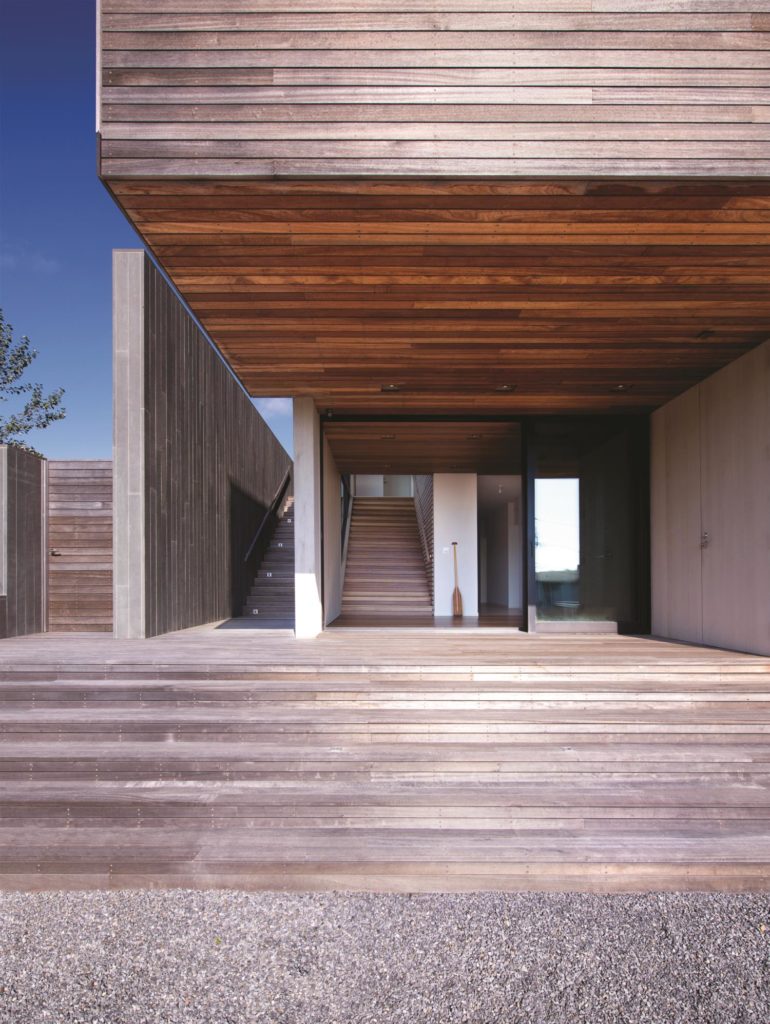

Her design is a careful continuation of beach and dune, except for the formal pool area. “The lawn and sod are a play area for the children,” she says.
The entire architectural effort was aimed at giving Masi’s clients, a New York family with a busy, stressful, and overwhelming work life, ways to get away from it all. “The wife is in the arts and the husband is in the financial industry,” he says.
This particular couple wanted a relationship with their outdoor spaces. “Think about it—most of our clients are here because it’s a place for escape and enjoyment,” explains the architect.
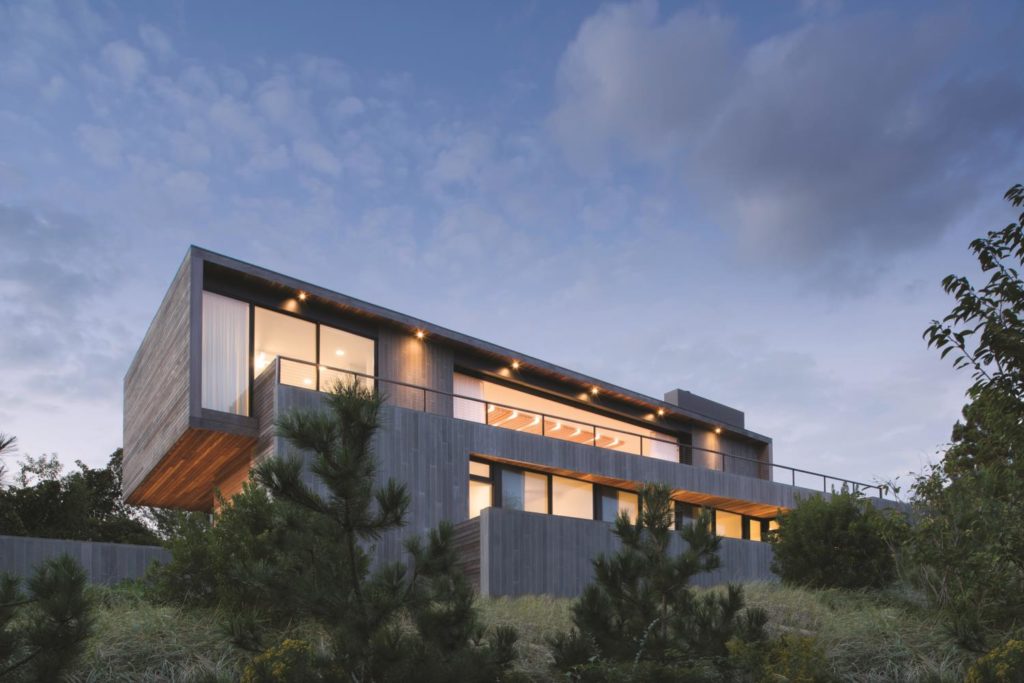

The house navigates and nests into the property for an indoor/outdoor relationship with the landscape. Its window walls open and let in breezes, causing the curtains to flutter and cast shadows on the floors and walls. Light passes through louvers above. “Whether it’s windy or sunny, it’s a different experience inside,” describes Masi. “It’s nice to have different experiences in the same space.”
His clients are lucky. They found an architect and a landscape designer who’ve known Montauk all their lives. Better yet, they poured all their knowledge—and themselves—into a home that’s clearly at ease with its environment.


